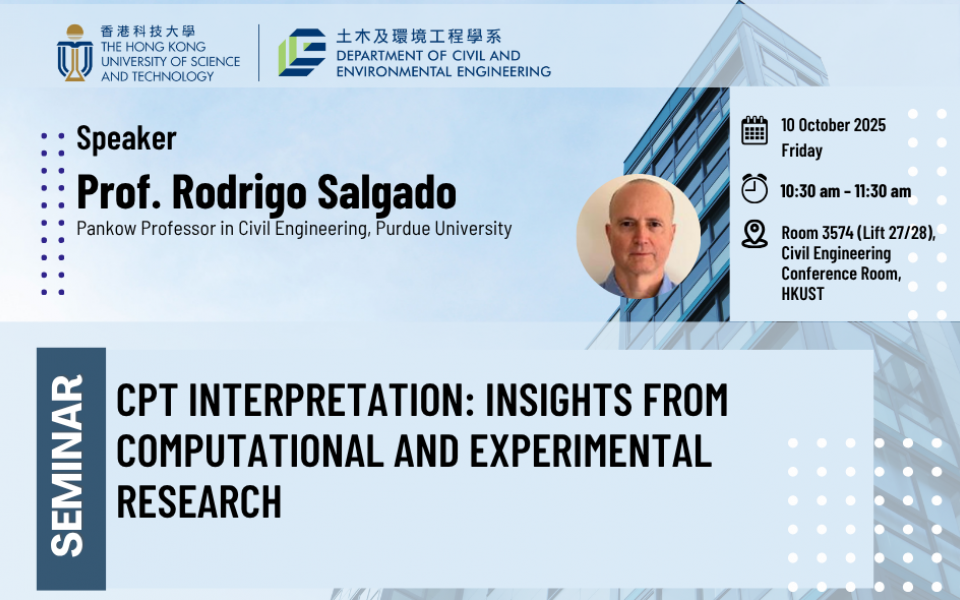Civil Engineering Departmental Seminar - CPT Interpretation: Insights from Computational and Experimental Research
Supporting the below United Nations Sustainable Development Goals:支持以下聯合國可持續發展目標:支持以下联合国可持续发展目标:
CPT Interpretation: Insights from Computational and Experimental Research
Interpretation of CPT results occurs at various levels. Broadly, the ultimate aim would be to acquire a comprehensive understanding of the soil profile at a given site. Narrowly, it would mean identifying and characterizing the soil at a given location, including determination of its soil state, or, in the alternative, extracting from CPT measurements the value of a corresponding design property of interest, such as pile unit shaft or base resistance or cyclic liquefaction resistance. To be able to perform high-quality interpretation of CPT results, answers to a number of questions must be obtained. In the presentation, these questions are discussed in varying degrees of detail, and include whether a measured cone resistance reflects the soil crossed by the cone or is impacted by different soils in the layers above and below, how to interpret a cone resistance measurement in clay or sand, and how to factor in drainage rate during penetration. The importance of simulations is emphasized, with examples of how MPM simulations can now be done with high level of confidence.
Rodrigo Salgado is the Charles Pankow Professor in Civil Engineering at Purdue University and co-Director of the Center for Offshore, Foundation and Energy Engineering (COFFEE). He holds a Ph.D. and an M.S. degree from the University of California, Berkeley, a J.D. (cum laude) from the Indiana University McKinney School of Law, and a civil engineering undergraduate degree from the Federal University of Rio Grande do Sul (UFRGS). Prof. Salgado has worked in theoretical, experimental and computational aspects of geomechanics for nearly 30 years. He is the author of the geotechnical engineering textbook The Engineering of Foundations, Slopes and Retaining Structures, and was the Editor-In-Chief of the Journal of Geotechnical and Geoenvironmental Engineering of the American Society of Civil Engineers from 2019-2023.
